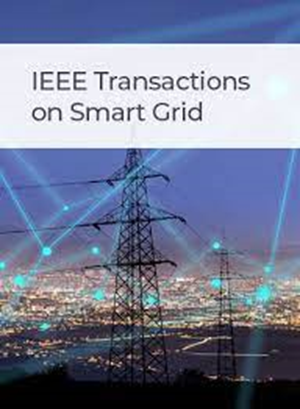Anomaly Identification of Synchronized Voltage Waveform for Situational Awareness of Low Inertia Systems
IF 8.6
1区 工程技术
Q1 ENGINEERING, ELECTRICAL & ELECTRONIC
引用次数: 0
Abstract
Inverter-based resources (IBRs) such as photovoltaics (PVs), wind turbines, and battery energy storage systems (BESSs) are widely deployed in low-carbon power systems. However, these resources typically do not provide the inertia needed for grid stability, resulting in a low-inertia power system. IBRs and lack of inertia have been known to cause anomalies such as waveform distortions and wideband oscillations in power systems due to the limited inertia level, leading to increased generation trips and load shedding. To achieve effective anomaly identification, this paper proposes a synchro-waveform-based algorithm utilizing real-time synchronized voltage waveform measurements from waveform measurement units (WMUs). In the proposed method, different physical characteristics, as well as statistical features, are extracted from synchronized voltage waveform measurements to filter anomalies. Then, the anomaly identification approach based on the random forest is developed and deployed into the FNET/GridEye system considering trade-offs among accuracy, computational burden, and deployment cost. Moreover, four WMUs are specially designed and deployed on Kauai Island to receive instantaneous synchronized voltage waveform measurements. To verify the performance of the proposed algorithm, different experiments are carried out with collected field test data. The result demonstrates that the performance of the proposed synchro-waveform-based anomaly categorization algorithm can accurately identify anomalies 95.35% of the time, which has comparable performance among benchmarking algorithms.用于低惯性系统态势感知的同步电压波形异常识别
基于逆变器的资源(ibr),如光伏(pv)、风力涡轮机和电池储能系统(bess),在低碳电力系统中得到广泛应用。然而,这些资源通常不能提供电网稳定所需的惯性,从而导致低惯性电力系统。由于惯性水平有限,ibr和惯性缺乏会导致电力系统中的波形畸变和宽带振荡等异常现象,从而导致发电跳闸和负载脱落增加。为了实现有效的异常识别,本文提出了一种基于同步波形的算法,该算法利用波形测量单元(wmu)的实时同步电压波形测量。在该方法中,从同步电压波形测量中提取不同的物理特征和统计特征来过滤异常。在此基础上,提出了基于随机森林的异常识别方法,并将其应用到FNET/GridEye系统中,同时考虑了准确率、计算量和部署成本的权衡。此外,在考艾岛上专门设计和部署了四个wmu,以接收瞬时同步电压波形测量。为了验证所提出算法的性能,利用收集的现场测试数据进行了不同的实验。结果表明,本文提出的基于同步波形的异常分类算法的异常识别准确率为95.35%,与基准算法具有可比性。
本文章由计算机程序翻译,如有差异,请以英文原文为准。
求助全文
约1分钟内获得全文
求助全文
来源期刊

IEEE Transactions on Smart Grid
ENGINEERING, ELECTRICAL & ELECTRONIC-
CiteScore
22.10
自引率
9.40%
发文量
526
审稿时长
6 months
期刊介绍:
The IEEE Transactions on Smart Grid is a multidisciplinary journal that focuses on research and development in the field of smart grid technology. It covers various aspects of the smart grid, including energy networks, prosumers (consumers who also produce energy), electric transportation, distributed energy resources, and communications. The journal also addresses the integration of microgrids and active distribution networks with transmission systems. It publishes original research on smart grid theories and principles, including technologies and systems for demand response, Advance Metering Infrastructure, cyber-physical systems, multi-energy systems, transactive energy, data analytics, and electric vehicle integration. Additionally, the journal considers surveys of existing work on the smart grid that propose new perspectives on the history and future of intelligent and active grids.
 求助内容:
求助内容: 应助结果提醒方式:
应助结果提醒方式:


